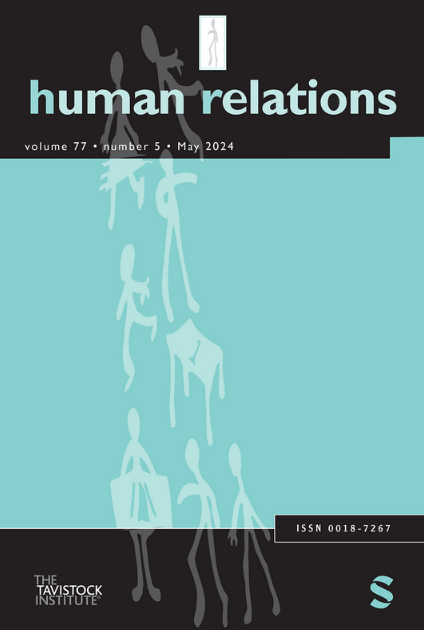太少还是太多?探索性别差异与员工旷工之间的联系
IF 5.4
2区 管理学
Q1 MANAGEMENT
引用次数: 0
摘要
尽管性别多样性倡议的初衷是好的,旨在通过确保女性在以男性为主的群体中拥有最低限度的代表性来解决性别失衡问题,但这种象征性的做法往往会加剧对这些妇女的歧视和社会孤立,并可能导致缺勤。研究表明,只有当男女比例达到一个临界点,能够真正实现融合和参与时,多样性的益处才能实现。然而,这个临界点仍不确定。我们将象征主义理论与社会认同和地位特征理论相结合,研究组织团队中的性别比例对个人旷工的影响。具体来说,我们认为性别差异与女性缺勤率之间存在 U 型关系,而与男性缺勤率之间不存在这种关系。研究 1 采用了为期一年的交叉滞后设计,涵盖了 1064 个团队中的 10 332 名蓝领工人,结果支持女性的 U 型关系,而男性的关系并不显著。在研究 2 中,我们采用实验设计,以 370 名女性蓝领工人为样本,探讨了两种可能共同解释女性 U 型性别差异效应的潜在机制。我们检验了工作群体的性别构成是否会影响女性报告不愉快经历的可能性以及群体对缺勤的规范。我们从这些发现中得出了理论和实践意义。本文章由计算机程序翻译,如有差异,请以英文原文为准。
Too few or too many? Exploring the Link between gender dissimilarity and employee absenteeism
Despite well-intentioned gender diversity initiatives aimed at addressing gender imbalances by ensuring minimal female representation in predominantly male groups, such tokenism often exacerbates discrimination and social isolation for these women, potentially leading to absenteeism. Research suggests that the benefits of diversity are realized only when the ratio of women to men reaches a critical threshold that allows for genuine integration and participation. However, this threshold remains uncertain. We integrate tokenism theory with social identity and status characteristics theories to investigate the effects of gender ratios within organizational teams on individual absenteeism. Specifically, we theorize a U-shaped relationship between gender dissimilarity and absenteeism for women, but not for men. Study 1, with a one-year cross-lagged design, encompassing 10,332 blue-collar workers in 1064 teams, supports the U-shaped relationship for women, while the relationship for men was non-significant. In Study 2, we use an experimental design with a sample of 370 female blue-collar workers to explore two potential mechanisms that may together explain the U-shaped gender dissimilarity effect for women. We test whether the gender composition of the work group affects both women’s likelihood of reporting unpleasant experiences and the group’s norms regarding absence. We draw theoretical and practical implications from these findings.
求助全文
通过发布文献求助,成功后即可免费获取论文全文。
去求助
来源期刊

Human Relations
Multiple-
CiteScore
12.60
自引率
7.00%
发文量
82
期刊介绍:
Human Relations is an international peer reviewed journal, which publishes the highest quality original research to advance our understanding of social relationships at and around work through theoretical development and empirical investigation. Scope Human Relations seeks high quality research papers that extend our knowledge of social relationships at work and organizational forms, practices and processes that affect the nature, structure and conditions of work and work organizations. Human Relations welcomes manuscripts that seek to cross disciplinary boundaries in order to develop new perspectives and insights into social relationships and relationships between people and organizations. Human Relations encourages strong empirical contributions that develop and extend theory as well as more conceptual papers that integrate, critique and expand existing theory. Human Relations welcomes critical reviews and essays: - Critical reviews advance a field through new theory, new methods, a novel synthesis of extant evidence, or a combination of two or three of these elements. Reviews that identify new research questions and that make links between management and organizations and the wider social sciences are particularly welcome. Surveys or overviews of a field are unlikely to meet these criteria. - Critical essays address contemporary scholarly issues and debates within the journal''s scope. They are more controversial than conventional papers or reviews, and can be shorter. They argue a point of view, but must meet standards of academic rigour. Anyone with an idea for a critical essay is particularly encouraged to discuss it at an early stage with the Editor-in-Chief. Human Relations encourages research that relates social theory to social practice and translates knowledge about human relations into prospects for social action and policy-making that aims to improve working lives.
 求助内容:
求助内容: 应助结果提醒方式:
应助结果提醒方式:


